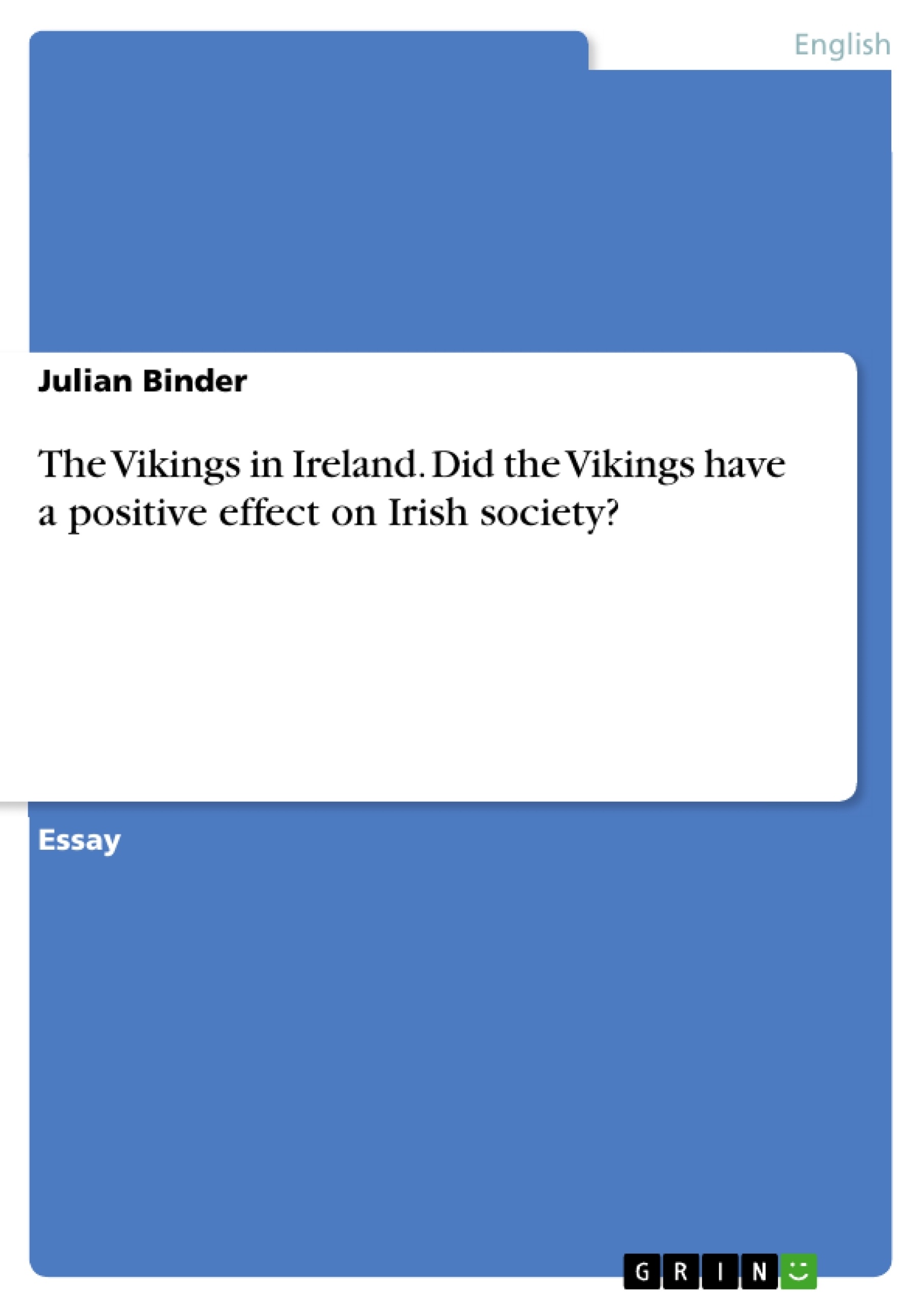“The term Viking conjures up for most Irish people bands of marauders and robbers who plundered Irish monasteries and churches, causing widespread destruction and terror […]“. Such a negative perception of the Viking Age, about 795 and 1169, correlates with the assertion uttered by historians in the past that “the effect of the Viking invasions on Irish
society was catastrophic”. This depiction of the invaders, mostly from Norway and later also from Denmark, seems to be based on sources from monasteries which had been the main targets of the Scandinavians during the first period of raids, approximately between 795 and 840. Therefore, the reliability of these sources is doubtful and they have to be interpreted
critically and very carefully.
However, many scholars nowadays believe that, on the whole, the Vikings had a positive effect on Irish society. The aim of this paper is to critically discuss and assess the
archaeological evidence which appears to support this position.
Table of Contents
- The Vikings and Irish Society
- The Foundation of Coastal Towns
- The Longphort
- The Importance of Dublin
- Trade and Economic Impact
- Coin Hoards and Silver Objects
- Interaction and Integration
- Influence on Irish Art and Manufacturing
Objectives and Key Themes
This paper aims to critically evaluate the archaeological evidence supporting the claim that the Vikings had a positive impact on Irish society.
- The establishment of coastal towns by the Vikings
- The economic impact of Viking trade and the introduction of a monetary system
- The integration of Vikings into Irish society and their political alliances
- The influence of Viking art and manufacturing on Irish culture
- The importance of archaeological evidence in understanding the Viking presence in Ireland
Chapter Summaries
The paper begins by discussing the historical perception of Vikings as plunderers and the need to critically assess traditional narratives. It then focuses on the establishment of coastal towns by the Vikings, particularly Dublin, highlighting the archaeological evidence for the longphort and the significance of Dublin as a trading center.
The next section explores the economic impact of the Vikings, examining coin hoards, silver objects, and the development of a monetary system in Ireland. This section also analyzes the interactions between Vikings and Irish people, emphasizing the growing level of integration and mutual trade.
Finally, the paper examines the influence of Viking art and manufacturing on Irish culture. The paper cites examples of Scandinavian styles and techniques found in Irish artifacts and suggests a significant impact on Irish craftsmanship.
Keywords
The key themes and concepts explored in this paper include Viking impact on Irish society, archaeological evidence, coastal town development, economic influence, trade, monetary system, integration, inter-marriage, art and manufacturing, and the importance of critical assessment of historical sources.
- Arbeit zitieren
- Julian Binder (Autor:in), 2012, The Vikings in Ireland. Did the Vikings have a positive effect on Irish society?, München, GRIN Verlag, https://www.hausarbeiten.de/document/335334


